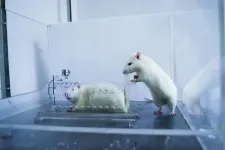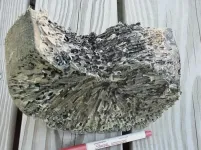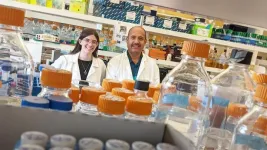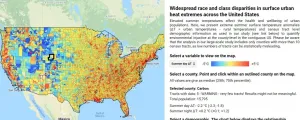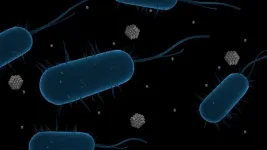(Press-News.org) A decade after scientists discovered that lab rats will rescue a fellow rat in distress, but not a rat they consider an outsider, new research from the University of California, Berkeley, pinpoints the brain regions that drive rats to prioritize their nearest and dearest in times of crisis. It also suggests humans may share the same neural bias.
The findings, published today, Tuesday, July 13, in the journal eLife, suggest that altruism, whether in rodents or humans, is motivated by social bonding and familiarity rather than sympathy or guilt.
"We have found that the group identity of the distressed rat dramatically influences the neural response and decision to help, revealing the biological mechanism of ingroup bias," said study senior author Daniela Kaufer, a professor of neuroscience and integrative biology at UC Berkeley.
With nativism and conflicts between religious, ethnic and racial groups on the rise globally, the results suggest that social integration, rather than segregation, may boost cooperation among humans.
"Priming a common group membership may be a more powerful driver for inducing pro-social motivation than increasing empathy," said study lead author Inbal Ben-Ami Bartal, an assistant professor of psychobiology at Tel-Aviv University in Israel.
Bartal launched the study in 2014 as a postdoctoral Miller fellow in Kaufer's laboratory at UC Berkeley. Bartal, Kaufer and UC Berkeley psychology professor Dacher Keltner led a research team that sought to identify the brain networks activated in rats in response to empathy, and whether they are mirrored in humans. The results suggest they are.
"The finding of a similar neural network involved in empathic helping in rats, as in humans, provides new evidence that caring for others is based on a shared neurobiological mechanism across mammals," Bartal said.
Using fiber photometry, immunohistochemistry, calcium imaging and other diagnostic tools, researchers found that all the rats they studied experienced empathy in response to another rat's signs of distress.
However, to act on that empathy, the helper rat's neural reward circuitry had to be triggered, and that only occurred if the trapped rat was of the same type as the helper rat, or member of its ingroup.
"Surprisingly, we found that the network associated with empathy is activated when you see a distressed peer, whether they are in the ingroup or not," Kaufer said. "In contrast, the network associated with reward signaling was active only for ingroup members and correlated with helping behavior."
Specifically, the rats' empathy correlated with the brain's sensory and orbitofrontal regions, as well as with the anterior insula. Meanwhile, the rodents' decision to help was linked to activity in the nucleus accumbens, a reward center with neurotransmitters that include dopamine and serotonin.
For the study, more than 60 pairs of caged rats were monitored over the course of two weeks. Some of the pairs were of the same strain or genetic tribe while others were not.
In each trial, one rat would be trapped inside a transparent cylinder while the other roamed free in a larger enclosure surrounding the cylinder.
While unconstrained rats consistently signaled empathy in response to the plight of trapped rats, they only worked to free those that were part of their ingroup, in which case they would lean or butt their heads against the cage door to release the rat.
Indeed, in reviewing the results of multiple measures to understand the neural roots of that bias, the research team found that while all the rodents in the trials sensed their cage partner's distress, their brains' reward circuitry was only activated when they came to the rescue of a member of their ingroup.
Moreover, humans and other mammals share virtually the same empathy and reward regions in the brain, implying that we may have similar biases toward our ingroup when it comes to helping others, Bartal noted.
"Overall, the findings suggest that empathy alone doesn't predict helping behavior, and that's really a crucial point," she said. "So, if you want to motivate people to help others who are suffering, it may be that you have to increase their feeling of belonging and group membership, and work toward a common identity."
"Encouragingly," she added, "we find that this mechanism is very flexible and determined primarily by social experience. We will now try to understand how pro-social motivation shifts when rats become friends, and how that is reflected in their brain activity."
INFORMATION:
In addition to Kaufer, Bartal and Keltner, co-authors of the study are Jocelyn Breton, Huanjie Sheng, Kimberly Long, Stella Chen and Aline Halliday of UC Berkeley; Justin Kenney, Anne Wheeler and Paul Frankland of the University of Toronto; and Carrie Shilyansky and Karl Deisseroth of Stanford University.
JUPITER, FL - The brain is wired for learning. With each experience, our neurons branch out to make new connections, laying down the circuitry of our long-term memories. Scientists call this trait plasticity, referring to an ability to adapt and change with experience.
For plasticity to happen, our neurons' synapses, or connection points, must constantly remodel and adapt, too. The mechanics underlying neurons' synaptic plasticity have become clearer, thanks to new research from the lab of Scripps Research neuroscientist Sathya Puthanveettil, PhD.
Scientists have learned that synaptic plasticity requires a complex relay from the neuron's cell body to its dendrite arms and its synapse junctions. Like a 24-hour port and highway network, an internal ...
ITHACA, N.Y. - Direct farm marketing efforts, such as farmers markets and roadside stands, are more successful in communities with more nonprofits, social enterprises and creative industries, according to a team including Cornell University researchers, who created a nationwide database of assets to help municipalities craft community-specific development plans.
While many municipalities seek to encourage direct-to-consumer (DTC) marketing - an important factor in farmers' livelihoods - the success of their efforts hinges on a wide array of community resources, or capital assets, with natural and cultural ...
AMHERST, Mass. - Humans have known for over two thousand years that shipworms, a worm-like mollusk, are responsible for damage to wooden boats, docks, dikes and piers. Yet new research from the University of Massachusetts Amherst published in Frontiers in Microbiology reveals that we still don't know the most basic thing about them: how they eat.
"It's unbelievable," says Reuben Shipway, adjunct assistant professor in microbiology at UMass Amherst, research fellow at the Centre for Enzyme Innovation at the University of Portsmouth, UK, and one of the paper's authors. "The ancient Greeks wrote about them, Christopher Columbus lost his fleet due to what he called 'the havoc which the worm had wrought,' and, today, shipworms cause billions of dollars of damage a year."
Shipworms ...
Middle- to older-aged adults who ate at least three servings of whole grains daily had smaller increases in waist size, blood pressure, and blood sugar levels over time compared to those who ate less than one-half serving per day, according to new research.
Published July 13, 2021, in the Journal of Nutrition, the study by researchers at the Jean Mayer USDA Human Nutrition Research Center on Aging at Tufts University examined how whole- and refined-grain intake over time impacted five risk factors of heart disease: Waist size, blood pressure, blood sugar, triglyceride, and HDL ("good") cholesterol.
Using data from the Framingham Heart Study Offspring ...
Philadelphia, July 13, 2021 - Consumers may have less trust in food processes that they don't understand, and animal-based foods may be subject to more uninformed scrutiny than other foods due to consumers' perception of higher risk. Dairy producers can benefit from understanding how consumers interpret unfamiliar terms and claims on dairy product labels. In a new END ...
New research from the University of Nebraska-Lincoln has shown that the mutations arising in the COVID-19-causing SARS-CoV-2 virus seem to run in the family -- or at least the genus of coronaviruses most dangerous to humans.
After comparing the early evolution of SARS-CoV-2 against that of its closest relatives, the betacoronaviruses, the Nebraska team found that SARS-CoV-2 mutations are occurring in essentially the same locations, both genetically and structurally.
The mutational similarities between SARS-CoV-2 and its predecessors, including the human-infecting SARS-CoV-1 and MERS-CoV, could help inform predictions of how the COVID-causing virus will continue to evolve, the researchers ...
Amsterdam, July 13, 2021 - Mass spectrometry has emerged as an important analytical tool for gaining a better understanding of mechanisms underlying Huntington's disease (HD), alongside the increased availability of cell and animal models of the disease. This END ...
YorkU pain research finds what you say in the first minute after a vaccine can be key in reducing a child's future distress
New study finds it's not just what say, but when you say it that can keep preschoolers calmer during vaccinations
TORONTO, July 13, 2021 - As we look forward to a fall with hopefully one of the most important vaccination uptakes of children in a generation, a new study provides insights to help parents with reducing post-vaccination distress in younger kids. The study, published in END ...
WASHINGTON--In cities and towns across the United States, neighborhoods with more Black, Hispanic and Asian residents experience hotter temperatures during summer heatwaves than nearby white residents, a new study finds. It is the first to show that the trend, documented in some major cities, is widespread, even in small towns, nationwide.
According to the new nationwide study, these racial disparities exist because non-white neighborhoods tend to be more densely built up with buildings and pavement that trap heat and have fewer trees to cool the landscape.
"Urban climate is different from temperatures outside the city," said co-author Susanne Benz, an ...
Antimicrobials are used to kill or slow the growth of bacteria, viruses and other microorganisms. They can be in the form of antibiotics, used to treat bodily infections, or as an additive or coating on commercial products used to keep germs at bay. These life-saving tools are essential to preventing and treating infections in humans, animals and plants, but they also pose a global threat to public health when microorganisms develop resistance to them, a concept known as antimicrobial resistance.
One of the main drivers of antimicrobial resistance is the misuse and overuse of antimicrobial agents, which includes silver nanoparticles, ...
